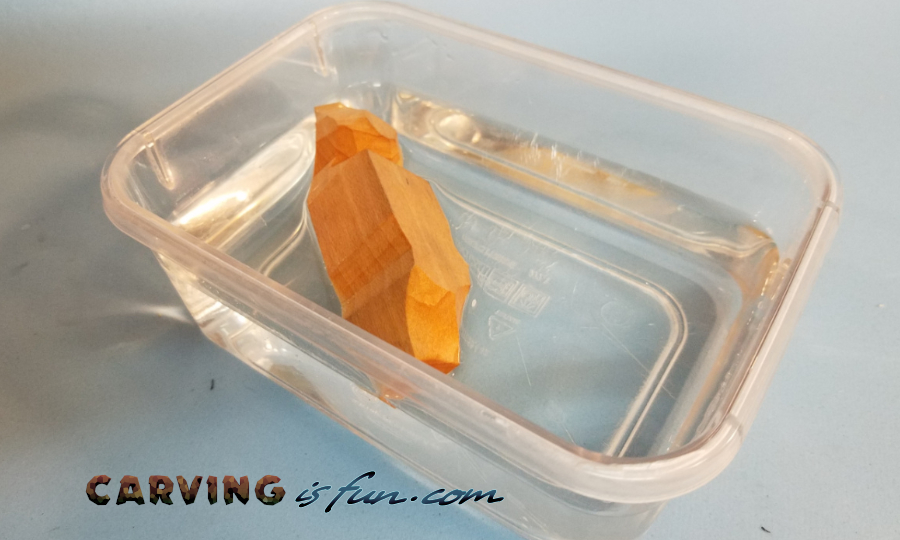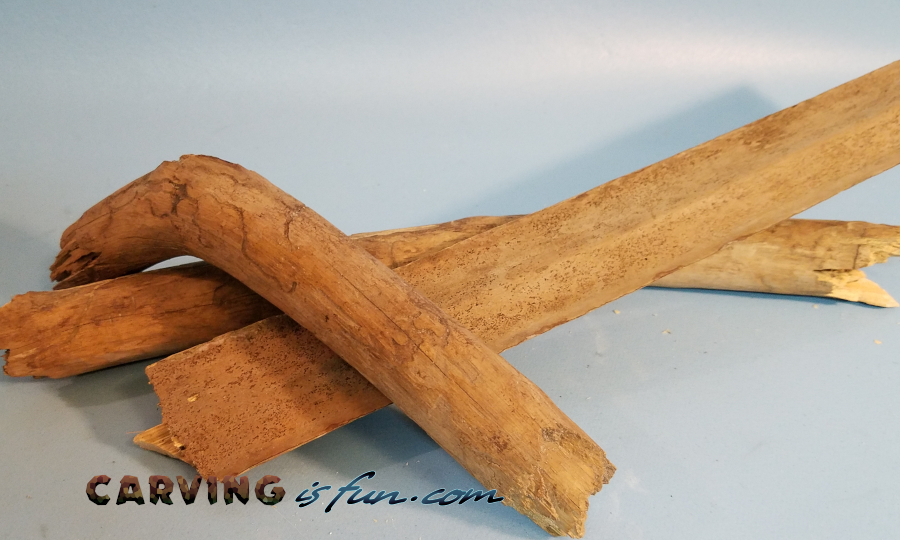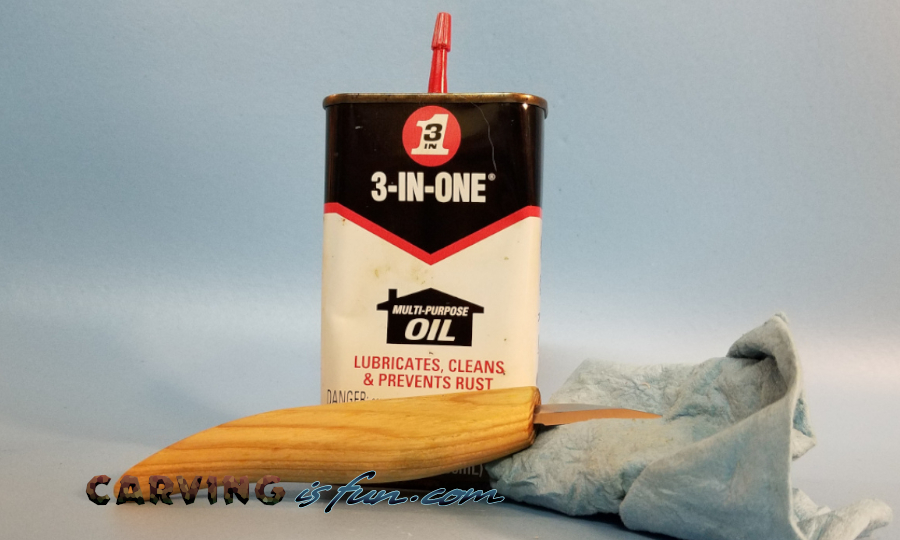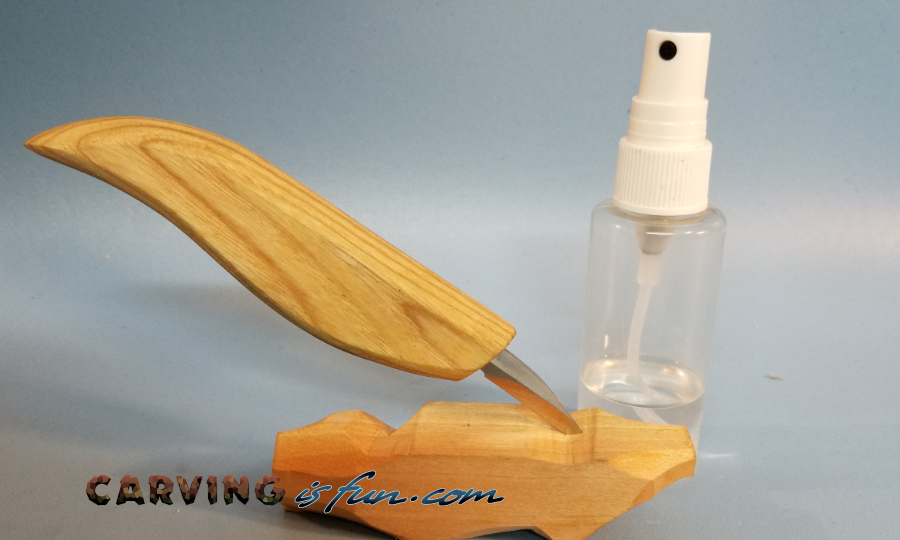Choosing the right wood to whittle is important for both adding detail and final results, but something else to consider is ease of carving.
One way to make wood easier to whittle is use wet wood, which can be soaked in water, sprayed on with a mixture of rubbing alcohol and water, or cut fresh from the tree which is more commonly called green wood.
You can whittle wet wood, and in doing so makes the carving process easier to do. If you are manually applying water by soaking the wood or spraying it on it may slow down the proceeds. When You are done, make sure you clean the moisture off of your knife to prevent rust.
Is it Easier to Carve Wet Wood?

If your wood is dry and brittle, this can make it harder to whittle and prevent the knife from easily gliding through the wood. Whittling the wood in this condition may ruin the overall experience for some beginners as they may wear out their hands and dull their whittling knives faster.
Carving wet wood is easier than carving it dry as the moisture in the wood allows the knife to glide through the wood easier. If the wood is too dry, the wood can be hard and brittle. By wetting the wood down before carving will make for a more enjoyable carving experience.
There are a few different ways to wet the wood down, each has their own benefits and should be considered if you are having a difficult time carving. Just keep in mind that hydrating the wood may make ti susceptible to bowing, checking, or splitting when it dries.
Soaking The Wood
The simplest way to wet down your wood is by soaking it in water. This allows the wood to evenly absorb water on all sides and doesn’t require anything special to do.
Soaking wood in water absorbs water from the outside in, which may leave the core dry even after soaking for a long period of time.
I recommend only soaking the wood for maybe 10-20 minutes at a time max if you are doing a smaller sculpture that fits in the palm of your hand. Allowing too much moisture into the wood may increase the chances of the wood checking or splitting along the grain.
You can just dip the wood back in the water for a minute while carving to keep the outer layer hydrated and easier to carve.
Spraying The Wood
Another popular method to make the wood easier to carve is to use a small spray bottle to hydrate the area you will be carving. This is typically achieved with a small spray bottle filled with 3/4 water and 1/4 rubbing alcohol.
By spraying with the water and rubbing alcohol mixture, you get a little better water absorption as the rubbing alcohol helps remove some surface tension and allows the water to seep deeper into the wood.
This is a very easy process to do and I usually keep a small spray bottle on my work bench in case I run across some tough wood. You don’t necessarily have to spray the entire piece of wood, but just the area you are working on.
Using Green Wood
The most popular way to whittle wet wood is to do so when it is freshly cut from the tree, also called green wood.
Green wood has the natural moisture from the tree still inside the wood and it is evenly dispersed from the core to the outer rings. This makes for a more consistent wet carving experience with little to no need for moisture application.
You may have to keep in mind that as the wood dries, it may want to split. If you are carving a larger piece, it may be beneficial to apply some moisture in areas you are working on to keep the section from drying out unevenly.
How Long Does it Take to Dry Wet Wood?
At the end of your carving, you will want to let the wood dry so you can add final touches or details that can only be done with dry wood. If the wood is still wet, it may be too soft to add decorative cuts or accents without distortion.
It can take green wood up to 6 to 8 weeks to dry out enough to finish carving them. If you are soaking your wood, allow a day or two for the outer layers to dry out naturally.
Larger pieces and colder temperatures may effect the time needed to dry. Make sure you are storing the wood in a dry location that won’t be effected by changes in humidity and temperature while allowing the moisture to evaporate.
I like to store my wood that is drying in my garage. They are placed in an open box with the date they were carved or gathered so I can easily keep track of when the drying process starts and ends.
Can You Whittle Any Wood?

There are lots of wood that you can choose from, and they can vary from too soft to too hard for whittling.
You can whittle most any wood, but you want to choose a softer wood to make your whittling experience more enjoyable. The ideal wood to whittle is basswood as it is soft enough to easily whittle with a knife, but hard enough to add fine details into the wood.
I also like to use sticks off the ground or green wood freshly cut from the tree. You can also use regular pine wood from a hardware store, but have found the density to change in the wood and the wood grain changes direction which can cause you to accidentally split the wood.
Some wood like oak is harder to whittle as the wood is more dense, which will wear out your blade. While these can be whittled, you will need more patience to do so.
Clean Your Knife When You Are Done

When you are done whittling wet wood you will need to clean your knife, especially if it is a carbon steel blade. If you don’t take care of your knife it will rust and pit rendering the knife useless.
To take care of your whittling knife after carving, wipe the blade down with a dry rag and then apply a thin layer of oil, like 3-in-one oil, to protect the blade and keep it in good condition.
This is a good practice even if you are only whittling dry wood as the oils on your fingers can cause the steel to rust over time.
For more carving tips and tricks, check out my one stop whittling resource for more information:
https://carvingisfun.com/Whittling

